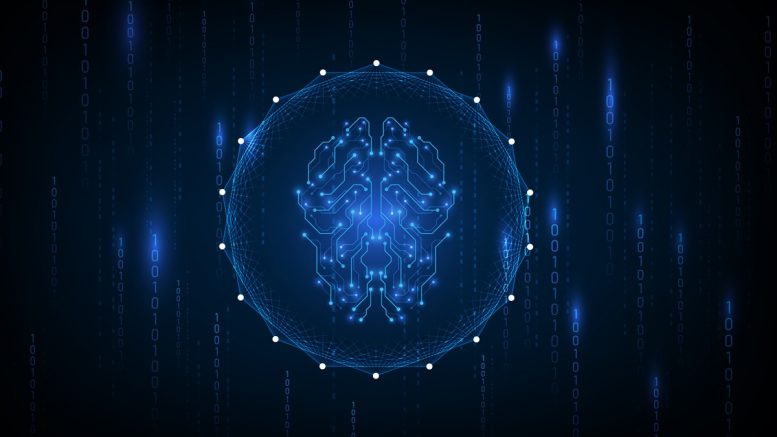Artificial intelligence (AI) is a powerful catalyst for innovation in various industries, and the health industry is no exception. For organisations that seek to lead the way in digital innovation, it’s an opportunity to tackle some of the most critical challenges in medicine, from better patient outcomes to mitigating practitioner burnout.
So: what are these opportunities, and where are we seeing AI make the biggest difference?
Automating administration
The most common use of AI in healthcare is to outsource time-consuming, repetitive administrative tasks that divert valuable resources away from patient care. Speed is often of the highest priority with this in mind, using technologies like generative AI and Robotic Process Automation (RPA) to accelerate processes.
Generative AI can entirely automate the creation of documents and reports, reducing the time pressure on administrative staff. RPA takes this one step further, using those reports as reference points to automatically schedule appointments and billing, as well as distributing that data to other key staff. Critical information is readily available when needed, improving overall operational efficiency – and without putting the workforce under any more strain.
As data-driven systems are entirely beholden to the data they’re using, this sort of integration can also significantly reduce human error. There’s very little room for the system to misinterpret the cold, hard data so crucial for patient care and compliance – avoiding the mistakes that can lead to serious consequences.
Beyond that, the use of advanced analytics can facilitate better data management. The classic applications of AI in a business setting still apply; it can analyse and identify patterns in datasets too large and/or too complex for humans to discern. This enables medical professionals to make data-driven decisions that can improve patient outcomes and optimise resource allocation. For example, predictive analytics can help in forecasting admission rates, enabling hospitals to better manage their staffing and resources.
Addressing medical practitioner burnout
COVID-19 brought much needed attention to the issue of medical professional exhaustion while also exacerbating it, with healthcare workers facing unprecedented levels of stress and fatigue. A recent study from the University of Bath has found that almost half of NHS staff are showing symptoms of burnout.
The logistical burden that AI can take on makes it an important tool for workers in this environment – not just in terms of collating data, but also in how we interact with it. For example, natural language processing (NLP) algorithms can transcribe and summarise consultations, freeing up clinicians to focus more on patient interaction rather than paperwork.
NLP can then, in the right environment, pull any of that data for a user at the drop of a hat. It can do so in response to direct questions in normal language, rather than making users wrestle with archaic hardware and ancient user interfaces to get what they need.
It’s important to also recognise that we very much live and work in the era of flexible working – and healthcare technologies should reflect that. The ability to access key patient information away from a particular practice is hugely important in reducing the need for travel and promoting a healthier work-life balance.
That accessibility positions AI to assist in clinical decision support, providing practitioners with real-time insights and recommendations based on the latest research and patient data. This not only improves the accuracy of diagnoses and treatment plans, but also reduces the cognitive load on clinicians.
Ultimately, having access to up-to-date information and automated recommendations empowers medical experts to make faster, better-informed decisions – which both lead to better treatment outcomes and reduced stress.
AI in health practice
A prime example of AI’s impact in healthcare can be seen in radiology. Recently, healthcare technology provider deepc has made significant strides in using AI to support stroke detection, chest x-ray triage, cell identification, and PET quantification – as just a few examples that empower clinicians and radiologist to better ascertain disease in patients.
These AI algorithms provide non-overlapping data in combination of the clinical review of the patient’s images. They allow for quicker reporting times and the identification of anomalies in radiology and pathology images that might have otherwise taken much longer to detect with the human eye, which is incredibly important for treating conditions where early diagnosis is very strongly tied to improved patient outcomes.
For example, a patient is scheduled for an outpatient CT scan, and the AI detects a stroke. Utilising the critical results that come from the AI health systems, the imaging management layers (VNA, PACS, enterprise viewers) can notify other HIM systems to raise the urgency of this routine exam to the top of the priority list.
These same systems can go beyond that to standardise the interpretation of images. AI health algorithms provide a consistent and objective analysis of imaging data, reducing the variability and ensuring that all patients receive the same high standard of care. While a radiologist will still interpret the exams the AI can quickly point them to significant findings that may be crucial to the diagnosis and reducing their dictation times per report.
The use of AI in combination with a reading radiologist ensures that small details aren’t overlooked due to fatigue, and also helps in protecting radiologists from their own bias. This standardisation is particularly beneficial in large healthcare systems, where multiple radiologists may be interpreting images from different locations and with differing perspectives.
The expansion of AI in health
All of these integrations are firmly grounded in the reality of day-to-day treatment – but the potential applications of AI extend far beyond administrative automation and industry standards. AI is making significant strides in various other areas, including predictive analytics, and personalised medicine. It offers medical professionals a chance to deliver more targeted and effective treatments, improving outcomes and overall care quality.
Predictive analytics can help identify patients at risk of developing chronic conditions, enabling early intervention and preventive care. AI algorithms have the performance levels and the data required to properly assess electronic health records (EHRs) for any correlation with the risk factors associated with conditions such as diabetes, cardiovascular diseases, and mental health disorders. Proactively addressing these risks will have much more chance of successful prevention, while also reducing the strain on the practice itself.
In personalised medicine, we’ll see the advent of more precise and individualised treatment plans. By analysing genetic, environmental, and lifestyle data, we’ll be able to help tailor treatments to each patient’s unique characteristics. This approach not only enhances the effectiveness of treatments but also minimises adverse effects, leading to better experiences and outcomes.
Looking ahead
AI technologies are constantly evolving, and it is crucial for health practitioners to stay ahead of the curve. We’re already seeing the groundwork for ambitious projects being laid.
In the UK alone, the new Labour government has announced a new AI Act as part of its King’s Speech; just a couple of months ago, the Medicines and Healthcare products Regulatory Agency (MHRA) has recently launched AI Airlock, its new regulatory sandbox for AI as a Medical Device. AI is only set to become faster, more intelligent, and more capable – with more tools for its development and regulation.
That’s not to overlook the huge impact that AI has already had upon healthcare. By automating administrative tasks, supporting clinician well-being, and enhancing diagnostic accuracy, the sector is transforming for the better. Innovations is paving the way for a more efficient, effective, and compassionate medical system.
As we look to the future, the integration of AI in the health industry will continue to expand, offering new opportunities to enhance patient care and operational efficiency. By embracing these technologies, medical professionals can not only improve their current practices, but also prepare for the challenges and opportunities that lie ahead.
By Alexander Ryan, Director EMEA Healthcare Business Development, Hyland





